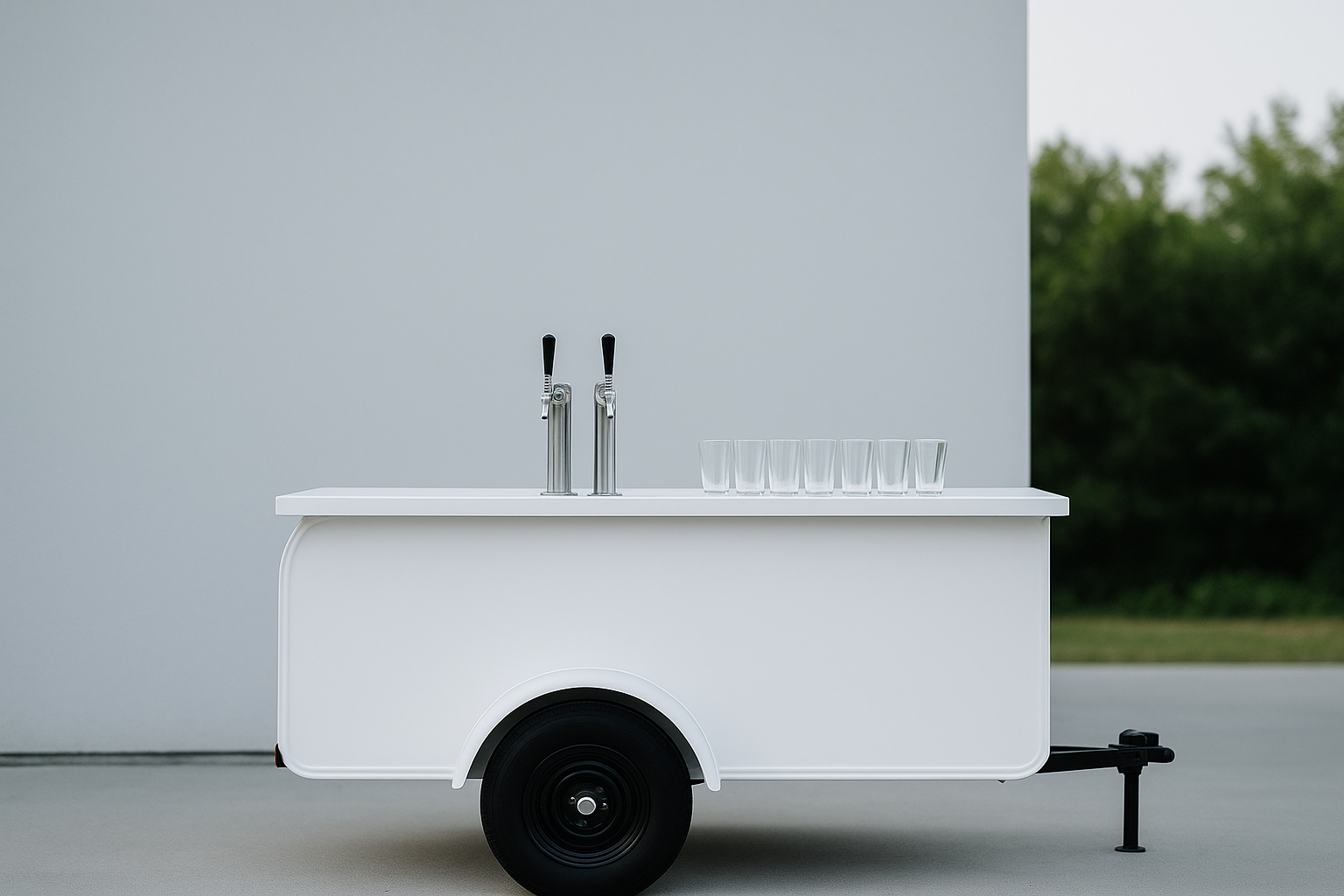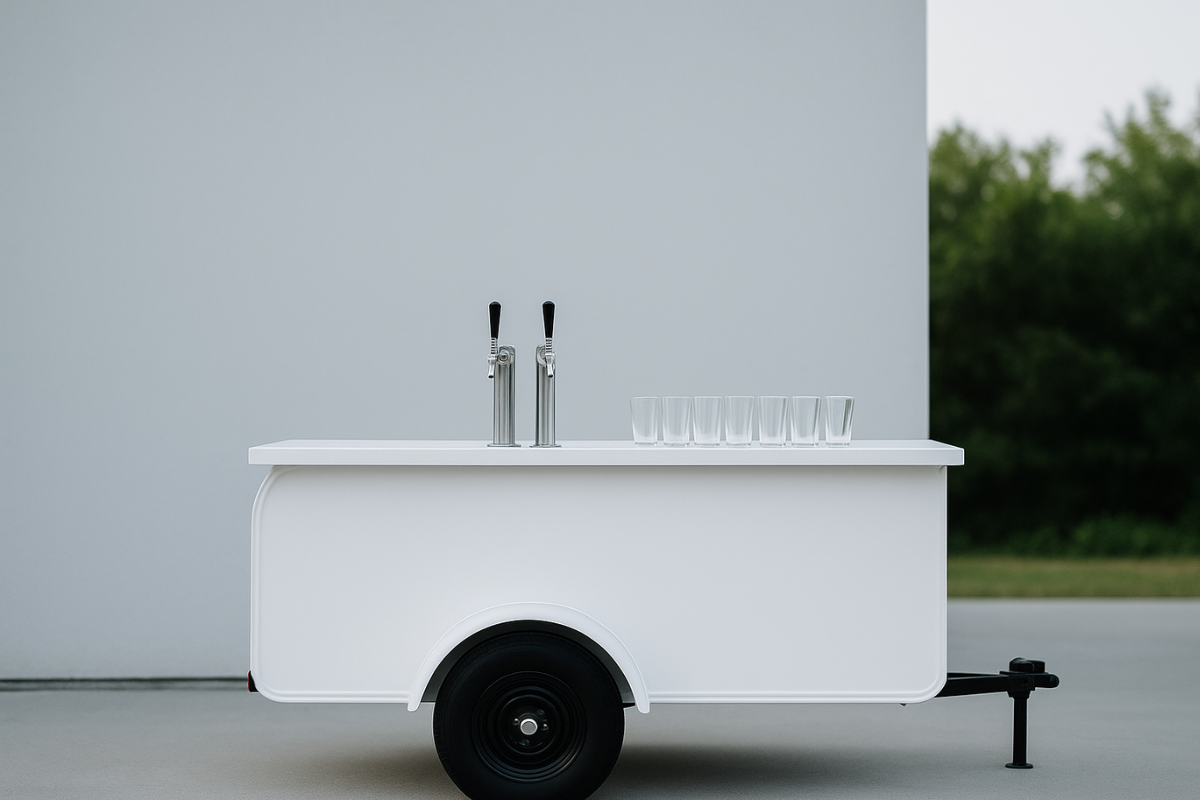
There’s a moment at every backyard party when the energy either picks up or stalls. It’s right where thirsty guests meet your drink setup. If the line crawls and the ice is melting, you can feel the buzz flatten. If the station is clear, cold, and easy, people get what they want, smile, and slide back to the conversation or the grill. The difference isn’t fancy equipment—it’s a simple plan you can repeat. Think flow first, cold chain second, menu third, and a few safety habits that keep everything running while you actually enjoy your own party.
Set the Stage: Flow, Sightlines, and a Station That Doesn’t Crowd the Food
Begin with a two-lane mindset: one obvious path into the drink station and one obvious path out toward seating. Angle the serving face so people can read labels from six to eight feet away, and give the table a little breathing room from the buffet or smoker. You want thirsty guests to peel off for a refill without blocking the brisket. Keep the kids’ options at eye level in a separate zone so there’s no mix-up with adult pours, and set your sign—big, simple, high-contrast—where decisions happen, not right at the faucets.
If you’re hosting a larger crowd or want to centralize kegs, cold storage, and taps without taking over the patio, a compact portable bar trailer keeps everything in one insulated footprint. Park on a durable surface like pavers or gravel, level the serving face so faucets don’t invite foam, and leave a narrow “runner lane” behind the bar for quick restocks. That tiny aisle is the difference between a calm pour and a staffer crossing the guest line with a dripping scoop. For smaller gatherings, a folding table works if you give it the same discipline: clear entry and exit, the coldest items front and center, and a bus tub at the far end so people ditch empties before re-entering the flow.
Think like a photographer for 30 seconds. A clean backdrop—hedge, fence, even a blank wall—makes signs easier to read and hides the cords you’d rather not see. Shade extends your ice and keeps guests patient, especially in warm weather. If the afternoon looks toasty, add a small fan under the table to move air across the staff zone; it’s quiet comfort that helps the pour stay consistent when the sun turns relentless.
Keep It Cold and Consistent: Draft Basics That Speed the Line
Draft-quality math is simple and unforgiving: cold beer or soda pours fast and clean; warm product foams and slows the queue. Chill whatever you plan to pour to 36–38°F and keep lines, shanks, and faucet bodies cold too. If you’re using a jockey box, pre-chill the coils, purge the first foamy ounce before guests arrive, and set pressure to match temperature and line length so you’re not “feathering” the tap mid-pour. For non-draft stations, pre-chill pitchers and keep backup batches on ice in sealed coolers so refills are faster than questions.
Menu decisions go hand in hand with temperature control. Offer two “fast pours” that never need explanation—a crisp lager or pils and a light, citrusy ale—then a couple of rotating options plus a no-alcohol headliner. Clarity speeds service, so print pour sizes that match your cups. For anyone helping behind the table, post the standard-drink equivalents—12 ounces of 5% beer, 5 ounces of 12% wine, 1.5 ounces of 40% spirits—as a shared language for portioning; the National Institute on Alcohol Abuse and Alcoholism has a concise breakdown you can reference on your shift sheet.
Hot days deserve extra thought. Shade the queue, keep water within easy reach, and plan short staff rotations so no one gets stuck in full sun for an hour. If you’ve ever watched a line fizzle when people get overheated, you know how fast good vibes can evaporate. The CDC’s heat-health guidance is a helpful reminder to build breaks, shade, and hydration into your plan before the forecast gets bossy. A station that treats water as the first-class choice—not a hunt—keeps guests happier and the rest of the party humming.
Build a Crowd-Pleasing Menu: Quick Pours, Kid Favorites, and a Signature Without Stress
Your drink menu should be something a new helper can run after a 60-second briefing. Put the water and the house mocktail where guests see them first. Keep the core list lean—five or six options beats a wall of indecision—and write in the order your hands move: style, pour size, ABV if applicable, and a two-word flavor cue. If you want an instant crowd-pleaser, you can’t go wrong with a big pitcher of Homemade Raspberry Lemonade; it reads summery, pours fast, and keeps all ages involved. For a zero-proof “fancy” option, a chilled batch of Mango and Basil Sparkling Spritzer hits the sweet-herbal note that makes people feel like they stumbled onto a hidden drinks cart without slowing the line.
Think of the menu as part of your pacing strategy. Set default sizes that match the heat and the crowd—smaller wine glasses in the afternoon, half-pours for hoppy or high-ABV beers—and place snacks near the adult station so refills pair with bites instead of turning into fast sips. Label the nonalcoholic hero drink as the first option on the board; it signals that “a great drink” and “not drinking” can be the same thing. Families appreciate it more than you’ll ever hear, and it nudges the whole crowd into a more sustainable rhythm. If kids are on the guest list—and they usually are—have a backup plan beyond soda: the site’s roundup of Ten Fantastic Kid Friendly Drinks is packed with pitcher-friendly ideas you can prep a day ahead and pour on repeat.
Keep batches honest to the glass. If your signature is a citrus-forward spritz, pre-mix the base sans bubbles and keep the seltzer cold for a crisp finish at the tap. If you’re leaning into a tea-and-lemon classic, sweeten conservatively and put simple syrup on the side so guests can tune their glass without holding the line. The secret isn’t complexity; it’s consistency. A menu that pours the same at 3 p.m. and 7 p.m. makes the whole evening feel effortless.
Run a Clean, Safe Back-of-House: Ice, Handwashing, and Power You Don’t Notice
The front looks calm when the back is disciplined. Treat ice as an ingredient, not a utility: one cooler for “service ice” with scoops only, a separate cooler for chilling cans and bottles. Keep spare scoops sealed so a dropped one doesn’t halt the line. If you’re offering garnishes or fruit cups next to the lemonade, hold them cold and use tongs; it’s faster, cleaner, and keeps little hands from wandering into shared bowls. For any setup that involves handling food, the FDA Food Code is the plain-English playbook you want in your back pocket—time/temperature control, handwashing, and separation of raw from ready-to-eat are right there in black and white.
Handwashing matters even when you’re not “a restaurant.” If your party is outside, set up a small wash station near the service area: a water jug with a spigot, soap pump, paper towels, and a catch bucket. Post a little reminder card where helpers will actually see it. It’s a five-minute chore that prevents the kind of “souvenir” no one wants to take home. Behind the scenes, route any extension cords along the back edge of the station where feet won’t find them, and test GFCI outlets before you plug in dispensers or lights. The best backyard power plan is the one nobody notices because nothing trips.
Finally, give your team tiny roles and scripts. One greeter answers questions and keeps the line moving. One pourer keeps the faucet fully open and the glass moving to the handoff zone. One runner handles ice, cups, trash, and keg swaps if you’re on draft. The job titles aren’t fancy, but they keep chaos from landing at the tap. When someone needs a break, the role is easy to hand off because the job is clear.
Conclusion: Make the Easy Choice the Obvious One
The best backyard drink stations feel invisible because they’re designed around how people move, decide, and cool off. Map a clean in-and-out, keep everything that touches a pour cold, write a short menu that pours fast, and run a tidy back-of-house. Do that, and your guests won’t talk about “the bar” at all—they’ll talk about each other, the food, and the easy, happy pace you set from the first pour.



